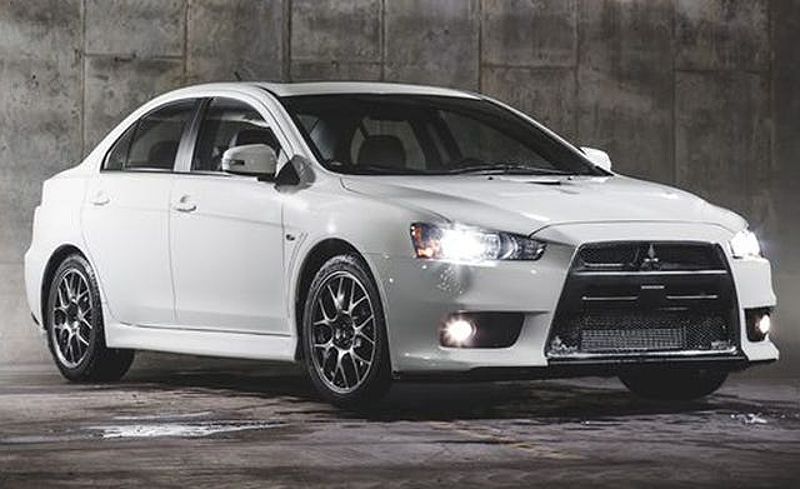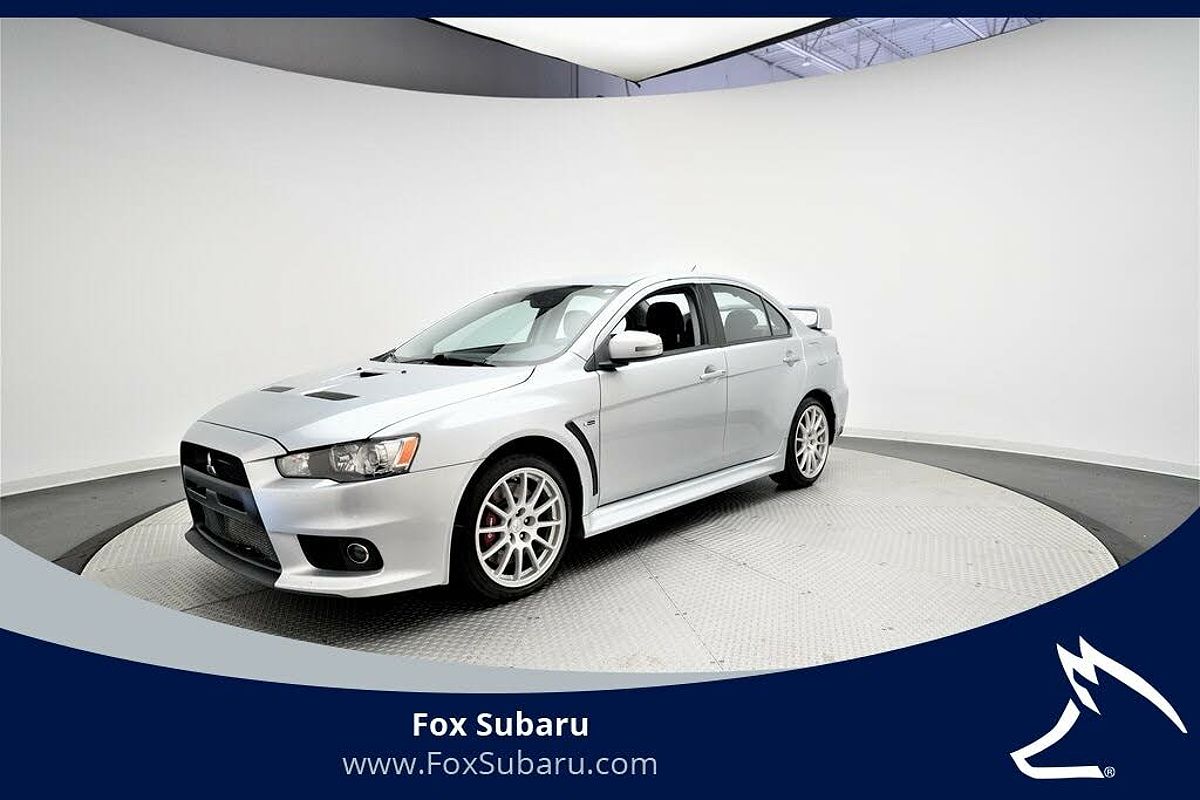Finding a New Mitsubishi Lancer Evo
The Mitsubishi Lancer Evolution, affectionately known as the Evo, has captivated the hearts of car enthusiasts worldwide with its rally-inspired heritage, exceptional driving dynamics, and unmatched all-wheel-drive system. Even though the last Lancer Evo rolled off the production line in 2017, the allure of owning a piece of this automotive icon remains strong. For many, the prospect of finding a new Mitsubishi Lancer Evo in the used market is an exciting journey filled with possibilities and challenges.
Navigating the Evos Used Car Landscape
When it comes to purchasing a used Mitsubishi Lancer Evo, understanding the pricing and market dynamics is crucial. The used Evo market is influenced by various factors, including model year, mileage, condition, and any modifications made to the vehicle. This performance sedan has a dedicated following, leading to fluctuating prices based on demand and rarity.
Pricing Overview
Early models, such as the Evo VIII and Evo IX, are highly sought after, often commanding higher prices. These models can range from $35,000 to $45,000, depending on their condition and mileage. On the other hand, the Evo X, which is the last generation, tends to be more accessible, with prices typically falling between $25,000 to $35,000 for well-maintained examples.
Recent auction results show a substantial increase in the value of early Evo models, with some pristine examples fetching well above their original MSRP. This significant rise in value is due to the increased collector interest and limited availability of these iconic performance cars.
When searching for your dream Evo, it’s essential to research current market trends. Websites like Cars.com, Autotrader, and specialized forums can provide valuable insights into pricing. Additionally, consider checking out local dealerships and Evo enthusiast groups for listings. Remember, the overall condition, mileage, and any modifications made to the vehicle can significantly impact the final price.
Factors Affecting Pricing
- Model Year: The Evo VIII and IX are often considered the golden years for the Evo lineup, leading to higher prices due to their rarity and enthusiast appeal.
- Mileage: Lower mileage vehicles generally command higher prices, but a well-maintained higher-mileage Evo can still be a great find.
- Condition: A vehicle that has been well-cared-for and regularly maintained will usually fetch a better price. Look for signs of wear and tear, and don’t shy away from asking for maintenance records.
- Modifications: Many Evo owners customize their vehicles, which can either enhance value or detract from it, depending on the quality of the modifications and how they align with enthusiast preferences. The rise in popularity of modified Evos within the car enthusiast community has also impacted pricing, as well-modified examples can command premium prices.
Potential Pitfalls and Common Issues with the New Mitsubishi Lancer Evo
Owning a used Mitsubishi Lancer Evo is not without its challenges. While the thrill of driving this legendary performance car is undeniable, potential buyers must be aware of common issues that can arise.
Turbocharger Concerns
The Mitsubishi 4G63 engine, used in many Evo models, is known for its robust design, but can suffer from issues like turbocharger failure (especially if not properly maintained), oil leaks from the rear main seal, and head gasket failure. For example, the Evo VIII’s TD05H-16G turbocharger, while powerful, is susceptible to shaft play and bearing wear if subjected to high boost pressures without adequate maintenance.

Transmission Issues
One of the most notable concerns is the AYC (Active Yaw Control) and ACD (Active Center Differential) systems, which are integral components of the Evo’s advanced all-wheel-drive setup. These specialized pumps have a reputation for failing, and replacement can be a costly endeavor. If you’re considering a used Evo, be sure to inquire about the condition of these systems.
Another potential issue lies with the transmission, particularly the Sportronic Shift Transmission (SST) found in some Evo models. While the manual transmission is generally more reliable, the SST can be temperamental and may require specialized maintenance. It’s crucial to test drive the vehicle and pay attention to how the transmission shifts, as any unusual behavior could indicate underlying problems.
Clutch wear is also a common concern for Evo owners who enjoy spirited driving. If the previous owner frequently engaged in aggressive driving, the clutch may show signs of excessive wear. A thorough inspection by a qualified mechanic can help identify potential issues before making a purchase.
Other Mechanical Concerns
Engine-related problems, such as oil consumption and timing chain stretch, are also something to be mindful of. Regular maintenance and preventative measures are crucial to mitigate these risks and ensure the longevity of the Evo’s high-performance powerplant. Ask about the vehicle’s service history and whether any engine-related repairs have been made.
Additionally, body and suspension components can show signs of wear and tear, especially in regions with harsh weather conditions. Inspecting for rust, checking the condition of suspension bushings, and assessing overall structural integrity should be part of any pre-purchase evaluation.
Maintaining the Legacy: Costs and Considerations
Owning a Mitsubishi Lancer Evo comes with a higher price tag when it comes to maintenance and long-term ownership expenses. As a high-performance vehicle, the Evo requires more frequent and specialized servicing compared to a typical family sedan.
Annual Maintenance Costs
Expect to spend around $2,000 to $3,000 per year on routine maintenance, including oil changes, fluid flushes, and tire replacements. This figure can vary based on how often you drive and the conditions in which you drive. Additionally, potential repairs related to the AYC/ACD systems, transmission, or engine can easily add several thousand dollars to the ownership costs.
It’s important to note that the availability and cost of specialized parts for the Lancer Evo can be higher than for more mainstream models. This should be factored into your budget when considering a used Evo purchase. Establishing a dedicated maintenance budget can help manage these costs effectively.
While repair costs can be significant, regular servicing and preventative measures can drastically extend the lifespan of crucial components, offsetting some of the expense. Additionally, the growing aftermarket support for these vehicles means that many common parts are still readily available online or through Mitsubishi dealerships.
Insurance Considerations
High-performance vehicles like the Evo typically command higher insurance premiums due to their performance capabilities and higher repair costs. Expect insurance premiums to be significantly higher than for a comparable family sedan, potentially adding $1,000-$2,000 or more annually to your ownership costs. Factors influencing insurance costs include driver profile, location, and coverage level.
Experiencing the Thrill: Performance and Driving Dynamics
The Mitsubishi Lancer Evo is renowned for its exceptional performance and thrilling driving experience. With its turbocharged 2.0-liter engine, the Evo can accelerate from 0 to 60 mph in as little as 3.5 seconds, thanks to its robust all-wheel-drive system. The Evo’s razor-sharp handling inspires confidence, allowing for precise control even at the limits of adhesion.
Performance Capabilities
The Evo’s advanced “All-Wheel Control” and “Super All-Wheel Control” systems provide exceptional grip and stability, enabling the driver to tackle tight corners and twisty roads with remarkable confidence. The Evo’s ability to distribute power to all four wheels enhances traction and control, making it a joy to drive in various conditions.

Whether you opt for an Evo VIII, IX, or X, the thrill of driving this performance-oriented sedan is undeniable. Drivers often report that the Evo feels like an extension of themselves, responding intuitively to steering inputs and providing exhilarating feedback.
Finding Your Evo: Tips and Resources
When searching for a used Mitsubishi Lancer Evo, it’s crucial to do your due diligence. Start by scouring online classifieds, Evo-specific forums, and dealerships to get a sense of the current market and pricing trends.
Professional Inspections
Arrange for a thorough pre-purchase inspection by a mechanic who specializes in Mitsubishi vehicles, ideally with experience working on Lancer Evolutions. This inspection should go beyond a simple visual check and include a compression test, a leak-down test, and a thorough examination of the drivetrain components.
Be sure to ask the seller for a complete maintenance history and inquire about any modifications or repairs that have been made to the vehicle. This information will help you assess the overall condition and determine if the asking price is fair.
Community Support
Joining Evo-enthusiast communities can also provide valuable insights and support throughout the ownership experience. These forums are a treasure trove of knowledge, where you can learn from the experiences of other Evo owners and get advice on maintaining and troubleshooting your prized possession.
FAQ
Q: What is the average lifespan of a Mitsubishi Lancer Evolution?
A: With proper maintenance, a well-cared-for Mitsubishi Lancer Evolution can last for many years and rack up high mileage. However, the specific lifespan will depend on how the vehicle has been used and maintained over the years.
Q: Are parts expensive for the Evo?
A: While some specialized parts may be harder to source, many common parts are still readily available online or through Mitsubishi dealerships, and a growing aftermarket supports these vehicles. Prices for certain components can be higher than for more mainstream models, but diligent maintenance can mitigate the long-term costs.
Q: How does the Evo perform in the snow?
A: The Mitsubishi Lancer Evolution excels in snowy conditions, thanks to its advanced all-wheel-drive system. With the right set of winter tires, the Evo can tackle snow-covered roads with impressive grip and traction.
Q: What are some good resources for finding a mechanic familiar with Evos?
A: Local Mitsubishi dealerships, specialized performance shops, and online Evo enthusiast forums are good starting points.
Q: Is it difficult to find parts for an older Evo?
A: While some parts may be harder to find than for more common cars, many are still readily available through online retailers and specialized parts suppliers.
Conclusion
Owning a used Mitsubishi Lancer Evo can be an exhilarating and rewarding experience, but it’s not without its challenges. By understanding the potential issues, maintenance requirements, and overall ownership costs, you can make an informed decision on whether a “new” Evo is the right fit for you. With diligent research, a thorough pre-purchase inspection, and a well-stocked maintenance budget, the thrill of driving a legendary performance car can be yours to enjoy. Whether you’re a seasoned enthusiast or a newcomer to the world of performance sedans, the Mitsubishi Lancer Evo offers an unparalleled driving experience that is sure to ignite your passion for the open road.
